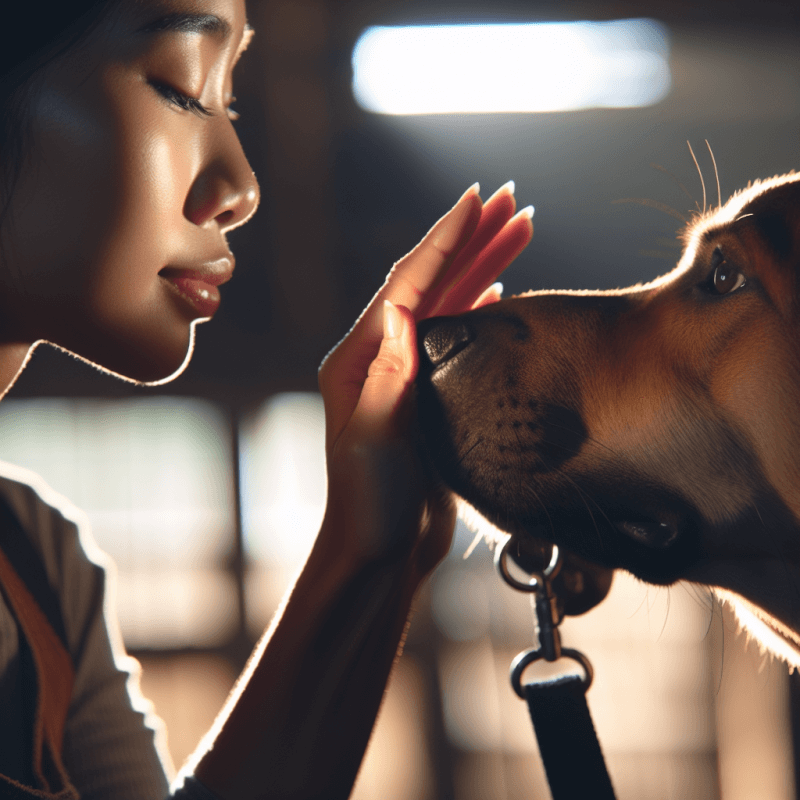In “Animal Training And Behavior,” get ready to embark on an exciting journey into the world of understanding the minds and behavior of animals. With a friendly and accessible tone, this article explores the fascinating realm of animal training and behavior, uncovering the secrets behind how animals learn, adapt, and interact with their environment. With a focus on building empathy and fostering positive relationships between humans and animals, this article is a must-read for anyone curious to learn more about the intricate connections that exist between us and the captivating creatures that share our world.
Understanding Animal Behavior
The Importance of Understanding Animal Behavior
Understanding animal behavior is crucial for several reasons. First, it allows us to have a better understanding of animals themselves, their natural instincts, and their needs. By understanding their behavior, we can provide appropriate care, create suitable environments, and ensure their overall well-being.
Ready for Cat Trivia?
Test your knowledge about cats!

Second, understanding animal behavior is essential for effective animal training. By knowing how animals naturally behave and learn, trainers can use this knowledge to train them efficiently and enhance their skills and abilities. Understanding animal behavior also helps trainers develop training techniques that are safe, respectful, and humane.
Types of Animal Behavior
Animal behavior can be classified into several types, each serving a specific purpose.
Instinctive Behavior: Instinctive behaviors are innate and instinctual, meaning they are present in animals from birth. These behaviors are inherited and help animals survive and reproduce.
Learned Behavior: Learned behaviors are acquired through experience and practice. Animals can learn from their interactions with the environment, other animals, or humans. Examples of learned behavior include hunting techniques, social interactions, and response to commands.
Social Behavior: Social behavior relates to how animals interact with others of the same species or different species. This behavior includes mating rituals, aggression, cooperation, and communication.
Agonistic Behavior: Agonistic behavior refers to behaviors associated with conflicts or contests between individuals, such as aggression, dominance, and territoriality.
Courtship Behavior: Courtship behavior is displayed by animals during mating rituals. These behaviors often involve elaborate displays, vocalizations, or actions to attract a mate.
Foraging Behavior: Foraging behavior focuses on how animals search for and obtain food. It includes hunting, scavenging, and searching for plants or other food sources.
Studying Animal Behavior
Studying animal behavior is a multidisciplinary field that combines biology, psychology, and ecology. Researchers use various methods and techniques to observe and analyze animal behavior, including:
Observation: Researchers spend time observing animals in their natural habitats to understand their behaviors, social dynamics, and patterns.
Controlled Experiments: Scientists design experiments to test specific hypotheses about animal behavior. They manipulate variables and observe how animals respond.
Field Studies: Researchers conduct studies in the animals’ natural environment to gather data and observe behaviors in a more realistic setting.
Technology: Advanced technology, such as cameras, tracking devices, and physiological monitors, allows researchers to gather more accurate and detailed information about animal behavior.
Comparative Studies: Comparing the behavior of different species can provide insights into evolutionary processes and shed light on how behaviors have developed and adapted over time.
Factors Influencing Animal Behavior
Animal behavior is influenced by a variety of factors, including:
Genetics: Animals have innate behaviors encoded in their DNA. These behaviors often serve specific functions and are passed down from generation to generation.
Environmental Factors: The environment plays a critical role in shaping animal behavior. Factors such as climate, availability of resources, and habitat structure can all affect how animals behave.
Social Interactions: Other animals within a social group can influence an individual’s behavior through socialization, hierarchy, and communication.
Learning and Experience: Animals learn from their experiences and adjust their behaviors accordingly. Positive or negative interactions with their environment can shape how an animal behaves in the future.
Health and Physiology: The physical and physiological condition of an animal can impact its behavior. Illness, injury, or hormonal changes may affect an animal’s behavior.
Human Interaction: Animals that interact with humans, such as domestic pets, service animals, and animal actors, are influenced by human interactions and training methods.
Understanding these factors is crucial for trainers and caretakers as it allows them to create appropriate training plans, modify behaviors, and provide a suitable environment for each individual animal.
Basic Principles of Animal Training
Positive Reinforcement
Positive reinforcement is a fundamental principle of animal training. It involves rewarding desired behaviors to encourage their repetition. Positive reinforcement can be in the form of treats, praise, or access to desired activities. This technique helps animals associate the desired behavior with a positive outcome, increasing the likelihood of them performing the behavior again in the future.
Negative Reinforcement
Negative reinforcement involves the removal or avoidance of an unpleasant stimulus to reinforce desired behaviors. It relies on the principle of escape or avoidance conditioning. An example of negative reinforcement is releasing pressure from a leash when a dog sits down, teaching them that sitting down leads to the cessation of the discomfort.
Punishment
Punishment is the application of an aversive stimulus or the removal of a desired stimulus to decrease the likelihood of a particular behavior. It should be used sparingly and with caution, as it can lead to negative side effects and potential harm if not applied correctly.
Extinction
Extinction refers to the gradual decrease and eventual elimination of a behavior when the associated reinforcement is removed. If a previously reinforced behavior no longer elicits the desired outcome, the animal will eventually stop performing that behavior.
Generalization
Generalization involves the ability of an animal to transfer a learned behavior from one situation or context to another. By encouraging generalization, trainers can ensure that animals understand and respond to the desired behavior in various situations.
Discrimination
Discrimination is the ability of an animal to distinguish between different stimuli or cues and respond appropriately. Trainers often teach animals to respond to specific cues while ignoring others to enhance discrimination abilities.
By understanding and applying these basic principles of animal training, trainers can effectively communicate with animals, establish desired behaviors, and create positive training experiences.

Training Methods
Operant Conditioning
Operant conditioning is a widely used training method that focuses on reinforcing desired behaviors through the use of rewards and punishments. It involves shaping or modifying behaviors through positive and negative reinforcement or punishment.
Classical Conditioning
Classical conditioning pairs a neutral stimulus with an involuntary response to create a learned association between the stimulus and the response. This method is often used to establish conditioned emotional responses or to teach animals to associate specific cues or signals with certain behaviors.
Clicker Training
Clicker training is a form of operant conditioning that uses a small handheld device called a clicker as a conditioned reinforcer. The clicker makes a distinctive sound that is paired with a reward, allowing animals to quickly learn and understand desired behaviors.
Target Training
Target training involves teaching an animal to touch or follow a specific target, such as a stick or a cone. This method is useful for training animals to move in specific directions, follow a path, or perform complex behaviors.
Shape Training
Shape training involves breaking down a desired behavior into manageable steps or approximations. The trainer reinforces each small step towards the final behavior, gradually shaping the animal’s behavior towards the desired outcome.
By utilizing these training methods, trainers can effectively teach animals new behaviors, enhance existing skills, and foster positive relationships between trainers and animals.
Animal Training for Specific Purposes
Domestic Pets
Training domestic pets, such as dogs and cats, is essential for their safety, well-being, and harmonious coexistence with humans. Basic obedience training, behavioral problem management, and socialization are key areas of focus for training domestic pets.
Working and Service Animals
Working and service animals, including guide dogs, therapy animals, and search and rescue dogs, undergo specialized training to perform specific tasks or provide assistance to people with disabilities. Their training often focuses on reliable obedience, task-specific skills, and the ability to work in various environments.
Zoo and Wildlife Animals
Zoo and wildlife animals require training for various reasons, including veterinary procedures, enclosure management, and educational presentations. Training techniques aim to reduce stress, facilitate healthcare, promote mental stimulation, and enhance the welfare of the animals.
Animal Actors
Animals involved in the entertainment industry, such as those in movies, commercials, or live shows, undergo training to perform specific behaviors on cue. They are trained through positive reinforcement techniques, shaping behaviors, and repetition to ensure reliable and safe performances.
Therapy Animals
Therapy animals, such as therapy dogs or horses, are trained to provide comfort, support, and companionship to individuals in various settings, including hospitals, schools, and nursing homes. Their training emphasizes sociability, calmness, and the ability to interact with a diverse range of people.

Factors Affecting Animal Training
Species Differences
Each animal species has its own natural behaviors, instincts, and learning abilities. Trainers must adapt their training methods and techniques to suit the specific needs and characteristics of the animal species they are working with.
Age and Developmental Stage
The age and developmental stage of an animal can influence its ability to learn and respond to training. Young animals may have shorter attention spans and require shorter training sessions, while older animals may have established behaviors that need to be modified or redirected.
Environmental Factors
The environment in which an animal lives and trains can impact its behavior and training progress. A safe, enriched environment that is free from distractions and potential stressors can facilitate learning and improve training outcomes.
Individual Variations
Just like humans, animals have unique personalities, temperaments, and learning styles. Trainers must consider these individual variations when developing training plans and techniques to ensure successful training outcomes for each animal.
Previous Training History
An animal’s previous training experiences or lack thereof can shape its behavior and response to new training. Trainers should take into account an animal’s training history to build upon existing skills or address any possible challenges that may arise from previous training methods.
By considering these factors, trainers can optimize the training process, create effective training plans, and address individual animal needs.
Ethical Considerations in Animal Training
Animal Welfare
The welfare and well-being of the animals being trained should always be the top priority. Trainers must ensure that training methods and techniques are safe, respectful, and promote positive animal experiences. Regular health checks, appropriate nutrition, and access to veterinary care should also be provided to maintain animal welfare.
Consent and Choice
Animal training should be based on voluntary participation, respecting an animal’s consent and choice to engage in training sessions. Trainers should use positive reinforcement techniques to motivate animals and empower them to make choices during the training process.
Humane Practices
Trainers must adhere to humane practices that prioritize the physical and mental well-being of animals. This includes avoiding the use of harsh punishments, excessive force, or aversive techniques that may cause unnecessary discomfort or distress to the animals.
Avoiding Negative Side Effects
Trainers should strive to minimize or eliminate any negative side effects that may result from training methods or techniques. This includes addressing fears or anxieties that may arise during the training process and ensuring that animals feel secure and supported throughout their training journey.
By considering ethical considerations in animal training, trainers can promote the welfare and happiness of the animals they work with while achieving desired training outcomes.

Common Challenges in Animal Training
Resistance to Training
Some animals may exhibit resistance or reluctance to participate in training. Trainers must employ patience, understanding, and innovative techniques to address these challenges and motivate animals to engage in training willingly.
Fear and Aggression
Fear and aggression can present significant challenges during training. Trainers must use positive reinforcement techniques, desensitization, and counter-conditioning methods to address fear or aggression-related behaviors and create a safe and trusting training environment.
Reactive Behavior
Animals may display reactive behaviors, such as barking, lunging, or hyperactivity, which can be challenging to manage during training. Trainers need to focus on teaching alternative behaviors, impulse control, and relaxation techniques to address reactive behaviors effectively.
Stimulus Control
Stimulus control refers to an animal’s ability to perform a behavior in the presence of specific cues or conditions. Trainers must carefully shape and reinforce the desired behavior while gradually introducing and strengthening the relevant cues for effective stimulus control.
Generalization and Transfer
Generalization and transfer refer to the ability of an animal to perform a learned behavior in various settings or contexts. Trainers need to provide opportunities for generalization by training in different environments, with different distractions, and gradually increasing the complexity of situations.
By recognizing and addressing these common challenges, trainers can adapt their training methods and techniques to effectively overcome any obstacles and achieve desired training outcomes.
Animal Behavior Modification
Understanding Undesirable Behaviors
Animal behavior modification requires an understanding of undesirable behaviors. Trainers must identify and analyze the underlying causes, triggers, and motivations behind these behaviors to design effective behavior modification plans.
Identifying Triggers
Identifying triggers is a crucial step in behavior modification. Trainers need to determine the specific situations, stimuli, or events that elicit or contribute to the undesirable behaviors. Recognizing triggers helps trainers develop strategies to modify the animal’s response to these triggers effectively.
Developing Behavior Modification Plans
Once the triggers and underlying causes are identified, trainers can develop behavior modification plans. These plans should include specific goals, targeted behaviors, and techniques to reinforce desired behaviors and discourage undesirable behaviors.
Implementing Behavior Modification Techniques
Implementing behavior modification techniques involves using positive reinforcement, counter-conditioning, desensitization, and other training methods to modify an animal’s behavior. These techniques aim to replace undesirable behaviors with more appropriate and desirable alternatives.
Evaluating Effectiveness
Regular evaluation of behavior modification plans is essential. Trainers need to assess whether the desired behaviors are improving, whether the triggers are successfully managed, and whether any adjustments need to be made to the training plan. Continuous evaluation ensures that behavior modification efforts are effective and on track.

The Role of the Animal Trainer
Skills and Knowledge Required for Animal Training
Animal trainers require a combination of skills and knowledge to be effective in their roles. These include a deep understanding of animal behavior and learning principles, the ability to observe and interpret animal cues, effective communication skills, and the creativity to adapt training techniques to individual animals.
Training Techniques and Strategies
Trainers need to be well-versed in a variety of training techniques and strategies to address different behaviors and species. They must choose the most appropriate methods based on the animal’s needs, temperament, and the desired training outcomes.
Building Trust and Bonding
Building trust and establishing a strong bond with the animals they work with is paramount for trainers. Positive reinforcement, consistency, gentle handling, and respect for the animal’s well-being contribute to developing trust and fostering a positive trainer-animal relationship.
Effective Communication
Trainers must be skilled in communicating with animals using clear and consistent signals, cues, and body language. They should also be adept at providing feedback and reinforcement to ensure that animals understand and learn desired behaviors.
Continuing Education and Professional Development
The field of animal training is constantly evolving, and trainers must stay up-to-date with the latest research, techniques, and ethical considerations. Continuing education, attending workshops, obtaining certifications, and engaging in professional development activities are vital for trainers to refine their skills and remain effective in their roles.
By embracing their role as animal trainers and continually developing their skills, trainers can make a positive impact on both the animal’s well-being and the quality of their training experiences.
Animal Training Success Stories
Exemplary Animal Training Programs
Several animal training programs have achieved significant success in training animals for specific purposes. These programs often employ positive reinforcement techniques, utilize innovative training methods, and prioritize animal welfare. Examples include guide dog training programs, conservation organizations focusing on reintroducing endangered species into the wild, and therapy animal programs.
Notable Animal Training Achievements
Throughout history, there have been numerous notable achievements in animal training. From impressive tricks performed by circus animals to animals assisting in scientific research or rescue missions, these achievements showcase the incredible capabilities and intelligence of trained animals.
Remarkable Animal-Behavior Relationships
The bond formed between an animal and its trainer can be truly remarkable. There have been countless stories of trainers forming strong, emotional connections with the animals they work with, leading to incredible displays of trust, cooperation, and teamwork. These relationships demonstrate the profound impact that positive training experiences can have on the well-being and behavior of animals.
Understanding animal behavior, employing effective training techniques, and prioritizing animal welfare are key factors in successful animal training. By embracing these principles and continuously striving for improvement, trainers can positively influence the lives of animals and promote harmonious interactions between humans and animals.



